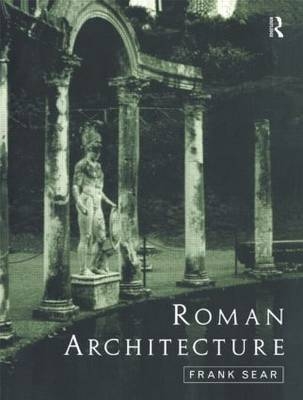
Roman Architecture
Seiten
1998
Routledge (Verlag)
978-0-415-20093-6 (ISBN)
Routledge (Verlag)
978-0-415-20093-6 (ISBN)
- Titel ist leider vergriffen;
keine Neuauflage - Artikel merken
In this comprehensive and accessible text, Frank Sear traces the evolution of Roman architecture during the four centuries from the late Republic to AD 330, when Constantine moved the empire's capital to Constantinople.
In this comprehensive, accessible and beautifully illustrated book, Frank Sear traces the evolution of Roman architecture during the four centuries from the late Republic to AD 330, when Constantine moved the empire's capital to Constantinople.
With over 200 diagrams, maps and photos, this lucid and eminently readable account is a detailed overview of the development of architecture from Augustine to Constantine.
Covering building techniques and materials as well as architecture and patronage, features include:
* deployment of the most recent archaeological evidence
* consideration of building materials and methods used by Roman engineers and architects
* examination of stylistic innovations
* analysis of the historical and cultural contexts of Roman architecture
* detailed exploration of key Roman sites including Ostia and Pompeii.
In high demand since its initial publication, this book will not disappoint in its purpose to educate and delight those in the field of Roman architecture.
In this comprehensive, accessible and beautifully illustrated book, Frank Sear traces the evolution of Roman architecture during the four centuries from the late Republic to AD 330, when Constantine moved the empire's capital to Constantinople.
With over 200 diagrams, maps and photos, this lucid and eminently readable account is a detailed overview of the development of architecture from Augustine to Constantine.
Covering building techniques and materials as well as architecture and patronage, features include:
* deployment of the most recent archaeological evidence
* consideration of building materials and methods used by Roman engineers and architects
* examination of stylistic innovations
* analysis of the historical and cultural contexts of Roman architecture
* detailed exploration of key Roman sites including Ostia and Pompeii.
In high demand since its initial publication, this book will not disappoint in its purpose to educate and delight those in the field of Roman architecture.
Frank Sear is Senior Lecturer in Classics at the University of Melbourne. He is the author of Roman Wall and Vault Mosaics and has worked on archaeological projects in Rome, Pompeii, Sicily, Jordon and Libya.
Foreword Acknowledgements Bibliography List of Illustrations 1. Republican Rome 2. Roman Building Types 3. The Age of Augustus 4. Roman Architects, Building Techniques and Materials 5. The Julio-Claudians 6. Two Roman Towns: Pompeii and Ostia 7. The Flavians 8. Trajan and Hadrian 9. North Africa 10. The European Provinces 11. The Eastern Provinces 12. The Late Empire Glossary Notes Index
| Erscheint lt. Verlag | 13.8.1998 |
|---|---|
| Verlagsort | London |
| Sprache | englisch |
| Maße | 189 x 246 mm |
| Gewicht | 552 g |
| Themenwelt | Kunst / Musik / Theater ► Kunstgeschichte / Kunststile |
| Geschichte ► Allgemeine Geschichte ► Vor- und Frühgeschichte | |
| Geschichte ► Allgemeine Geschichte ► Altertum / Antike | |
| Geisteswissenschaften ► Geschichte ► Regional- / Ländergeschichte | |
| Technik ► Architektur | |
| ISBN-10 | 0-415-20093-8 / 0415200938 |
| ISBN-13 | 978-0-415-20093-6 / 9780415200936 |
| Zustand | Neuware |
| Haben Sie eine Frage zum Produkt? |
Mehr entdecken
aus dem Bereich
aus dem Bereich
auf den Spuren der frühen Zivilisationen
Buch | Hardcover (2023)
C.H.Beck (Verlag)
20,00 €
Konzepte – Methoden – Theorien
Buch | Softcover (2024)
UTB (Verlag)
39,90 €
Was Pompeji über uns erzählt
Buch | Hardcover (2023)
Propyläen (Verlag)
32,00 €


